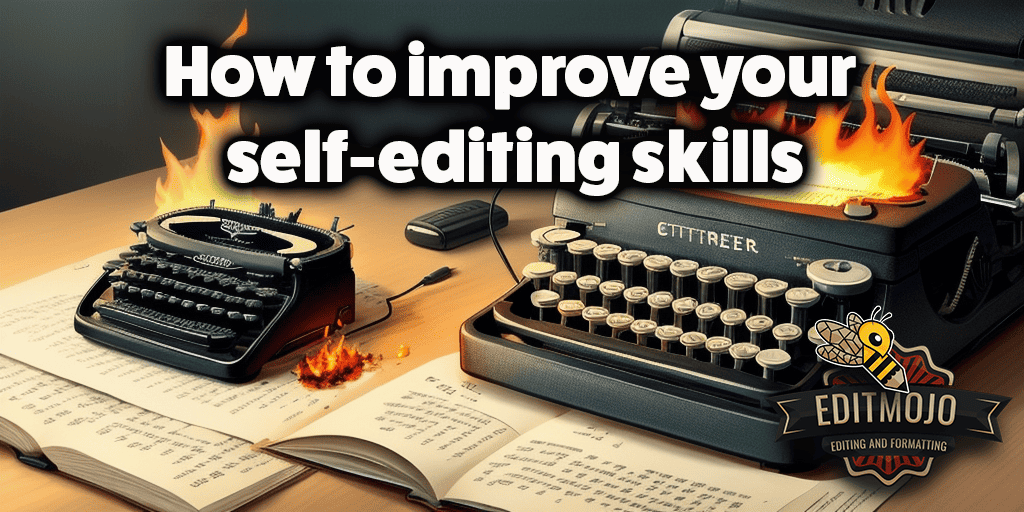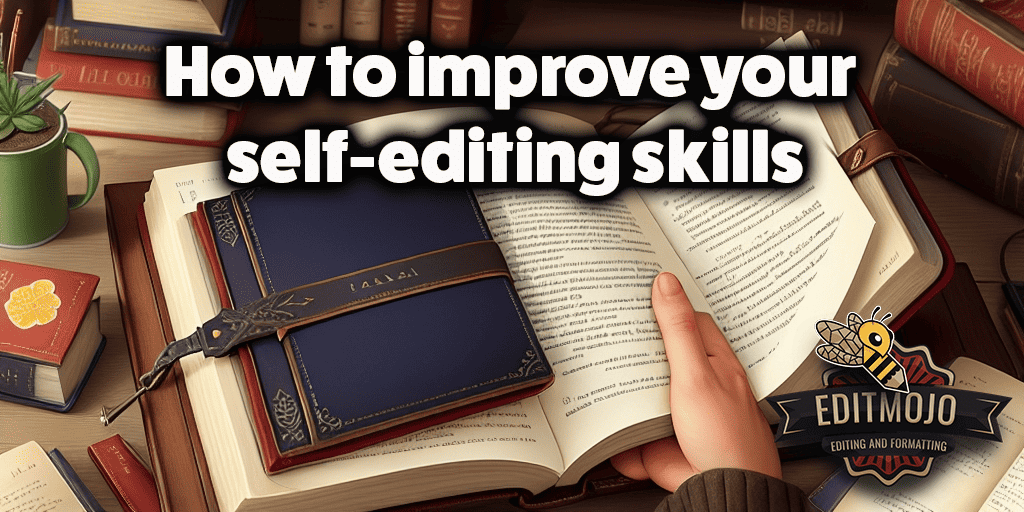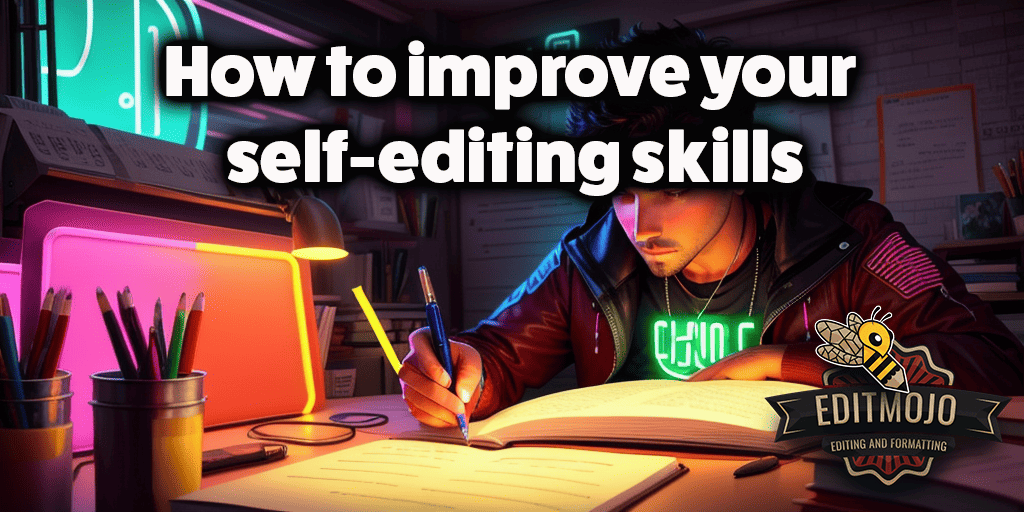How to improve your self-editing skills
How to improve your self-editing skills. One skill often stands out as particularly challenging yet crucially important: self-editing. It’s the process that polishes your rough drafts into gleaming gems ready for the world to see. But how do you improve your self-editing skills? This comprehensive guide will walk you through the essentials of self-editing, from understanding its importance to mastering practical techniques and using helpful tools. So, whether you’re a seasoned writer or a novice, this guide is your ticket to becoming a more effective self-editor. Let’s dive in!
Key Takeaways
| Section | Key Takeaway |
|---|---|
| Understanding the Basics of Self-Editing | Self-editing is a critical part of the writing process that requires a clear understanding and a critical eye. |
| Developing a Self-Editing Mindset | Cultivating patience, objectivity, and a critical eye are essential for effective self-editing. |
| Practical Self-Editing Techniques | Techniques like reading your work aloud, isolating elements, and using the ‘First Look’ trick can significantly improve your self-editing skills. |
| Structural Editing | A well-structured piece is crucial for readability and engagement. Using a “Godfather” story as a framework can be helpful. |
| Editing for Content | Consistency in POV and tense, character development, and plot progression are key areas to focus on when editing for content. |
| Editing for Language and Style | Eliminate redundancies, enhance dialogue and metaphors, and ensure appropriate tone and voice for effective language and style editing. |
| Using Editing Tools and Resources | Tools like Grammarly and peer reviews can be invaluable resources in your self-editing process. |

Common Questions and Answers (How to improve your self-editing skills)
| Question | Answer |
|---|---|
| What is self-editing? | Self-editing is the process of reviewing, revising, and correcting your own writing before it’s shared with others. |
| Why is self-editing important? | Self-editing helps to improve the clarity, coherence, and overall quality of your writing, making it more engaging and effective for your readers. |
| What are some practical self-editing techniques? | Some techniques include reading your work aloud, isolating elements of your work, and using the ‘First Look’ trick. |
| What is structural editing? | Structural editing involves assessing and shaping material to improve its organization and content. |
| What tools can help with self-editing? | Tools like Grammarly, Hemingway Editor, and ProWritingAid can help with self-editing. Peer reviews are also a valuable resource. |
Understanding the Basics of Self-Editing
Self-editing is more than just a quick read-through of your work for typos or grammatical errors. It’s a critical part of the writing process that involves reviewing, revising, and correcting your own writing to improve its clarity, coherence, and overall quality. But to do it effectively, you need to understand its role in writing and dispel common misconceptions. For instance, self-editing isn’t about stifling your creativity; it’s about refining it to better connect with your readers.

Developing a Self-Editing Mindset (How to improve your self-editing skills)
Improving your self-editing skills starts with developing the right mindset. This involves cultivating patience and objectivity—two qualities that can help you critically assess your work without getting too attached. It also involves embracing what we call the “Butcher’s Mindset.” This means being willing to cut out unnecessary parts of your work, even if you love them, for the sake of clarity and conciseness.
Practical Self-Editing Techniques
There are several practical techniques you can use to improve your self-editing skills. One of these is reading your work aloud. This can help you catch awkward phrasing and rhythm issues that you might miss when reading silently. Another technique is isolating elements of your work, such as looking at dialogue or description separately. This can help you focus on one aspect at a time and make more targeted improvements. Finally, using the ‘First Look’ trick—where you set your work aside for a while before editing—can help you approach it with fresh eyes and a more objective perspective.
Structural Editing
Structural editing is all about assessing and shaping your material to improve its organization and content. It involves looking at the big picture of your work and making sure it flows well and makes sense. One technique for structural editing is using a “Godfather” story as a framework. This involves identifying the key elements of your story and making sure they’re well-structured and compelling.

Editing for Content (How to improve your self-editing skills)
When editing for content, you should focus on key areas like consistency in POV and tense, character development, and plot progression. This involves checking that your POV and tense are consistent throughout your work, ensuring your characters are well-developed and believable, and evaluating whether your plot progresses in a logical and engaging way.
Editing for Language and Style
Editing for language and style involves refining your use of language to enhance your writing style. This includes eliminating redundancies and filler words, enhancing dialogue, metaphors, and similes, and ensuring your tone and voice are appropriate for your audience and purpose. Remember, every word counts, so make sure each one adds value to your work.
Using Editing Tools and Resources
There are several tools and resources available that can help you with self-editing. One of these is Grammarly, a tool that can help you catch grammar, spelling, punctuation, and style issues in your writing. Other resources include writing guides, style manuals, and even peer reviews. Don’t be afraid to use these resources to help you improve your self-editing skills.
The Role of External Feedback in Self-Editing
While self-editing involves reviewing your own work, external feedback can also be invaluable. This includes peer reviews and critiques from others who can provide a fresh perspective on your work. Incorporating this feedback into your self-editing process can help you identify areas for improvement that you might have missed.
Conclusion (How to improve your self-editing skills)
Improving your self-editing skills is a journey, but with patience, practice, and the right techniques, you can become a more effective self-editor. Remember, self-editing is not about making your work perfect—it’s about making it better. So, keep learning, keep practicing, and keep striving for improvement. Happy editing!
Top Five Questions and Answers
| Question | Answer |
|---|---|
| What is self-editing? | Self-editing is the process of reviewing, revising, and correcting your own writing before it’s shared with others. |
| Why is self-editing important? | Self-editing helps to improve the clarity, coherence, and overall quality of your writing, making it more engaging and effective for your readers. |
| What are some practical self-editing techniques? | Some techniques include reading your work aloud, isolating elements of your work, and using the ‘First Look’ trick. |
| What is structural editing? | Structural editing involves assessing and shaping material to improve its organization and content. |
| What tools can help with self-editing? | Tools like Grammarly, Hemingway Editor, and ProWritingAid can help with self-editing. Peer reviews are also a valuable resource. |
Remember, the journey to becoming a better self-editor is a continuous one. Keep exploring, learning, and applying new techniques and strategies.
